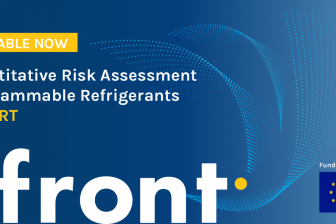Interview with a LIFE FRONT partner – Joachim Maul

Joachim Maul is responsible for R&D, product management and labs at ait-deutschland GmbH – member of the NIBE group. In this interview he outlines some of the key reasons for joining the LIFE FRONT project and the expectations on the outcome.
Q: Why have you joined LIFE FRONT project and what is your role / contribution?
A: At ait-deutschland we manufacture heat pumps from 2kW – 500kW and chillers for different applications in the range of 1kW- 1MW. We joined the LIFE FRONT project because for us it is crucial to improve the conditions for the use of natural refrigerants in our products while considering safety aspects. Our role within the project is to contribute with our expertise with natural refrigerants as well as leaks, which is based on many years of experience.
Q: What do you think are the key aspects for the safety of hydrocarbon-based RACHP systems?
A: The key aspects when dealing with natural (flammable) refrigerants is the consideration of the necessary safety requirements in the design and use of the devices. In addition to the definition of a maximum permissible filling quantity, it is essential to observe all necessary design (with regard to avoidance of ignition sources, etc.) and application details, which can lead to a critical situation. In the end, all results should be incorporated into a new standard that takes these aspects into account and gives manufacturers and users clear rules.
Q: What do you think about the future potential for hydrocarbon-based heat pumps?
A: Hydrocarbon (HC) refrigerants, because of their high environmental compatibility and very good thermodynamic properties, have a very high potential especially in heat pumps. With the results developed in this project, the areas of application can be significantly extended taking into account all safety aspects.
Q: What have you personally learned from the LIFE FRONT project?
A: There is a community who believes in these kind of refrigerants and supports it. When we started 8 years ago with HC refrigerants in our heat pumps there were not so many followers. Today the situation is changing and the interest is growing, which I personally welcome very much. The tests with R290 in our lab, where I saw the behaviour in case of a leak, were of a big interest.







